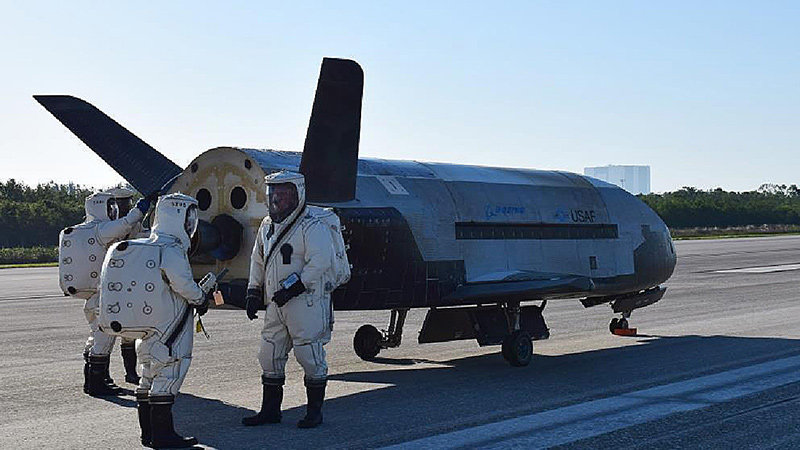Stay Up to Date
Submit your email address to receive the latest industry and Aerospace America news.
The Space Systems Technical Committee fosters the development, application and operation of space systems and addresses emerging issues in the area.
This year saw both commercial industry and U.S. government programs make important achievements toward unprecedented space-based capabilities in domains such as communications, earth imaging, astronomy and national defense.
On the commercial front, SpaceX made a pioneering advance in March with the first reuse of an orbital-class rocket. The Falcon 9 first-stage rocket delivered the SES-10 communications satellite into geostationary orbit. SpaceX had originally flown and landed the rocket on a barge in April 2016. Launch vehicle reuse is regarded as a key element of lower cost access to space, and SpaceX projects an ultimately realizable 30 percent cost reduction for its customers. In June, SpaceX flew a refurbished Dragon capsule to the International Space Station — another first. The capsule had flown on a 2014 ISS mission and had some parts — notably the heat shield — replaced prior to the second flight.
SpaceX also conducted the first two of eight missions to populate the next-generation Iridium NEXT communications satellite constellation. January and June launches each put 10 satellites into low Earth orbit. When the 75-satellite constellation is complete, Iridium NEXT will provide global communications and global air traffic surveillance. Virginia-based Aireon has partnered with Iridium to equip each satellite with receivers to collect location and airspeed data broadcast by commercial aircraft. For SpaceX, the January launch was an important return-to-flight mission following the 2016 explosion of a Falcon 9 on the launch pad.
In April, Planet closed a deal to purchase Google’s Terra Bella satellite business. The acquisition immediately added seven high-resolution Earth imaging satellites to Planet’s constellation of 100 moderate-resolution cubesats. Building variety into what data can be collected daily for any location on Earth enlarges Planet’s addressable market. As part of the deal, Google became a shareholder in Planet as well as a client, agreeing to purchase data that will support its mapping and analytics products.
NASA’s Juno spacecraft marked its first year in orbit around Jupiter on July 4 and continues to execute its science mission, which is scheduled to last until at least July 2018. Juno’s suite of nine instruments is designed to improve understanding of Jupiter’s structure and origin. Because of its highly elliptical orbit, Juno can collect data at distances ranging from 5 million kilometers to as close as 2,100 km. This year’s highlight was the July 10 low-altitude pass over the famous Great Red Spot, a storm structure more than 20,000 km across that has persisted since at least 1830.
The James Webb Space Telescope team completed acoustic and vibration testing of the integrated optical telescope and science instrument assembly in March at NASA’s Goddard Space Flight Center. In May, the hardware was delivered to NASA’s Johnson Space Flight Center for cryogenic vacuum testing, which started in July. The telescope is scheduled to launch in 2018.
The U.S. Air Force concluded the fourth flight of its X-37B unmanned space plane in May with its first landing at NASA’s Kennedy Space Center. The small shuttle-like vehicle spent 718 days in orbit, breaking the previous X-37B mission record by more than 40 days. The Air Force advertises the X-37B as a space technology demonstration platform, although mission details remain secret.
In March, the Air Force announced acquisition of the first on-orbit data from its newest space-based infrared system geosynchronous orbit satellite. It’s the third operational GEO platform in the SBIRS, which is the main U.S. system for detecting launches and predicting trajectories for intercontinental and theater ballistic missiles.
Related Posts
Stay Up to Date
Submit your email address to receive the latest industry and Aerospace America news.




